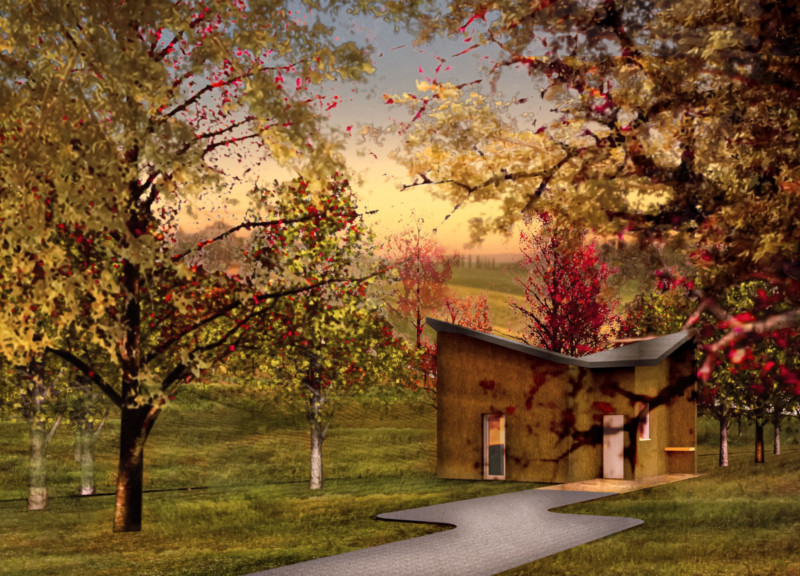5 key facts about this project
The design presents a strong focus on sustainable living, integrating renewable energy systems within a flexible spatial layout. Situated in an environmentally conscious context, the building supports various activities while promoting efficiency and adaptability. The concept emphasizes a connection to nature, utilizing resources wisely to create a comfortable living space.
Materials and Structure
The roof is covered with wooden shingles made from larch wood, offering both durability and a warm appearance. The solid wood framework not only supports the structure but also adds to the overall aesthetic. Featuring rock wool insulating panels and a vapor barrier, the design maintains effective thermal performance, ensuring energy efficiency and a stable indoor climate throughout different seasons.
Flexible Spatial Configurations
Interior spaces are designed with flexibility in mind, incorporating bamboo for the interior lining. This choice improves acoustic and thermal properties, contributing to a comfortable environment. Sliding walls made of wooden beams allow for adaptive use of space, enabling changes in layout to meet various functional needs. A height-adjustable floor designed for hydroponic farming highlights an innovative blend of agricultural practices with residential living.
Energy and Resource Management
Energy efficiency is highlighted through photovoltaic panels that capture solar energy, reducing the reliance on traditional electricity sources. Alongside a pellet stove for localized heating, these features showcase a commitment to using sustainable resources. An electric boiler and strategically placed water tanks facilitate efficient water management, ensuring that resources are used thoughtfully throughout the building.
Non-opening windows are strategically incorporated to maximize natural light while reducing reliance on artificial lighting. The careful placement of these elements enhances the interior atmosphere, creating a bright and welcoming environment that encourages well-being and interaction with the outdoors.



















































